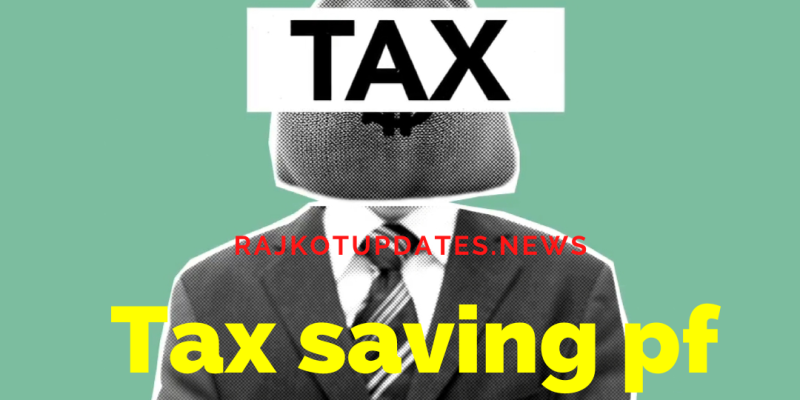It is an important part of the Indian tax system. This allows individuals to save a portion of their income and claim tax deductions for it. The benefit of tax saving PF FD and Insurance Tax Relief is that it allows individuals to save money and also receive tax breaks.
What is Tax Saving PF FD and Insurance?
Tax Saving PF FD and Insurance Tax Relief is a scheme designed by the government to encourage people to save and invest money for their future. It helps people save money on their taxes by allowing them to invest in certain products, such as Public Provident Fund (PPF), Fixed Deposits (FDs) and Life Insurance Policies. These investments are eligible for tax deductions, which can significantly reduce the amount of taxes you pay.
The amount of tax deduction depends on the type of investment, the amount invested and the duration of the investment. For instance, with PPF, the maximum tax deduction allowed is Rs 1.5 lakhs per financial year. Similarly, with FDs and life insurance policies, the limit is Rs 1 lakh per financial year. Tax Saving PF FD and Insurance Tax Relief also helps people save on taxes by providing tax exemptions on the maturity proceeds of these investments. So, by investing in these products, you can save significant amounts of money on taxes, while also planning for your future.
Tax Benefits of Tax Saving PF FD and Insurance
Tax Saving PF FD and Insurance Tax Relief can be a great way to save money on taxes. It allows you to save for the future and reduce your taxable income at the same time. The tax benefits of Tax Saving PF FD and Insurance vary depending on the type of investment you choose. For example, investments in tax-saving PF FDs and Insurance plans offer tax-free returns and can help you save taxes when you withdraw the money. Similarly, investments in tax-saving insurance policies provide tax deductions on the premiums paid. Tax savings from these investments can be claimed when you file your income tax return.
The primary benefit of Tax Saving PF FD and Insurance is that the money invested will not be taxed by the government. This means that the gains from these investments are tax-free and can be used to build a secure future. Additionally, the interest earned on the investments are also exempt from taxes, providing an additional advantage. Furthermore, Tax Saving PF FD and Insurance plans are also an excellent way to save on taxes as they allow you to claim deductions on the premiums paid. This can help reduce your taxable income, making it easier to manage your finances.
Overall, tax saving PF FDs and Insurance plans can be a great way to save money on taxes. They provide tax-free returns, tax deductions on the premiums paid, and can help you build a secure future. It is important to research the different types of investments available and choose the one that best suits your needs and financial goals.
Reasons to Invest in Tax Saving PF FD and Insurance
Tax saving PF FD and insurance are great investment options for those who are looking to save on their taxes. Investing in these products not only helps to reduce one’s overall tax liability, but also provides a secure way to save and grow money. The various tax benefits available with these tax saving instruments make them extremely attractive and beneficial for salaried individuals and business owners alike. Here are some of the reasons why investing in tax saving PF FD and insurance can be beneficial:
Firstly, the returns on these investments are often tax-free. This means that the income generated from the investments will not be taxed and the investor can save money on their taxes. Secondly, the funds invested in a tax saving PF FD or insurance are eligible for tax deductions. This means that the amount invested is deducted from the total taxable income, thus reducing the overall tax liability.
Thirdly, the returns from these investments tend to be higher than other traditional investments and also provide a steady stream of income. Fourthly, investing in tax saving PF FD and insurance provides security for the future. The money invested will be safe and secure and can be used as a source of income in the future. Lastly, these investments are also very convenient and easy to manage. The investor can easily check the performance of their investments and make necessary changes if needed.
Types of Tax Saving PF FD and Insurance
When it comes to tax saving, there are various options available such as Public Provident Fund (PPF), Fixed Deposits (FDs) and Insurance. Each of these options have their own unique features and benefits that can help you save on tax. Investing in a Public Provident Fund (PPF) is one of the most popular tax-saving options. It offers a fixed interest rate of 8.0%, with a maximum investment limit of Rs. 1.5 lakhs in a financial year. The interest earned is exempt from tax, and the maturity amount is also tax-free. Moreover, the amount invested in PPF also qualifies for deduction under Section 80C of the Income Tax Act.
Fixed Deposits (FDs) are another popular tax-saving option. FDs offer higher interest rates than PPF, with a maximum limit of Rs. 1.5 lakhs. The interest earned from the FDs is fully taxable, and the maturity amount is also taxable according to the applicable tax slab. However, the principal amount invested in FDs is eligible for deduction under Section 80C.
Insurance is yet another tax-saving option available to individuals. Life Insurance policies offer a tax benefit of up to Rs. 1.5 lakhs under Section 80C of the Income Tax Act. The premium paid for the policy is eligible for deduction, and the maturity amount is also tax-free. Additionally, health insurance policies offer tax benefits of up to Rs. 25,000 under Section 80D of the Income Tax Act. The premium paid for health insurance is eligible for deduction, and the maturity amount is also tax-free.
How to Get Maximum Tax Benefits from Tax Saving PF FD and Insurance
Tax saving PF FD and Insurance can provide you with a great way to maximize your tax benefits while still saving money in the long run. With these investments, you can save money on taxes and build your wealth at the same time. To get the most out of these investments, it is important to understand the different tax reliefs that are available and how to choose the right ones for you.
The most common type of tax relief that can be obtained through tax saving PF FD and Insurance is the Capital Gains Tax (CGT) exemption. This type of relief allows any profits made from the sale of your investments to be exempt from CGT. Additionally, you can also benefit from tax relief on any losses that you incur from the sale of your investments. This can result in significant savings for those who invest in the long run.
In addition to CGT exemption, tax saving PF FD and Insurance can also provide you with tax relief in the form of deductions. These deductions can be claimed for a variety of expenses including legal fees, brokerage fees and other costs associated with managing your investments. Furthermore, you may be able to claim tax relief on any interest you earn on your investments. This can result in significant savings over the long term.
Finally, tax saving PF FD and Insurance can provide you with a great way to reduce your taxable income. By investing in these types of investments, you can reduce your taxable income by the amount of the capital gains tax that would have been payable on the sale of your investments. This can result in significant savings for those who invest for the long term.
Advantages and Disadvantages of Tax Saving PF FD and Insurance
Advantages and Disadvantages of Tax Saving PF FD and Insurance: Tax saving PF FD and insurance are a great way to save money and benefit from tax relief. They provide investors with the opportunity to save money and take advantage of tax deductions on their investments. The most common tax saving investments are public provident fund (PPF), fixed deposits (FDs) and insurance.
The primary advantage of investing in tax saving PF FD and insurance is the tax deduction benefit. An investor can claim a deduction on the amount invested under Section 80C of the Income Tax Act. This deduction is applicable up to a maximum of Rs.1.5 lakhs per financial year. In addition, interest and maturity proceeds from PPFs and FDs are tax free. Insurance policies also provide tax deductions for premiums paid, along with life insurance cover.
The primary disadvantage of these investments is that the returns are relatively low. FDs and PPFs provide fixed returns and insurance provides returns only on maturity. Therefore, these investments do not provide high returns compared to other investment options such as equity-related investments. They also have a lock-in period, which means investors can’t access their money for a specific period of time. In addition, these investments are not suitable for short-term goals as the returns take time to accumulate.
Conclusion
Tax Saving PF FD and Insurance are some of the best tax reliefs that one can avail to help save on taxes. These tax reliefs will not only help reduce your current tax liabilities but also help you secure your future through investments and insurance. While it can be a daunting task to understand the various policies and regulations related to these tax reliefs, the overall benefits and savings make them worthwhile investments.

















Comments